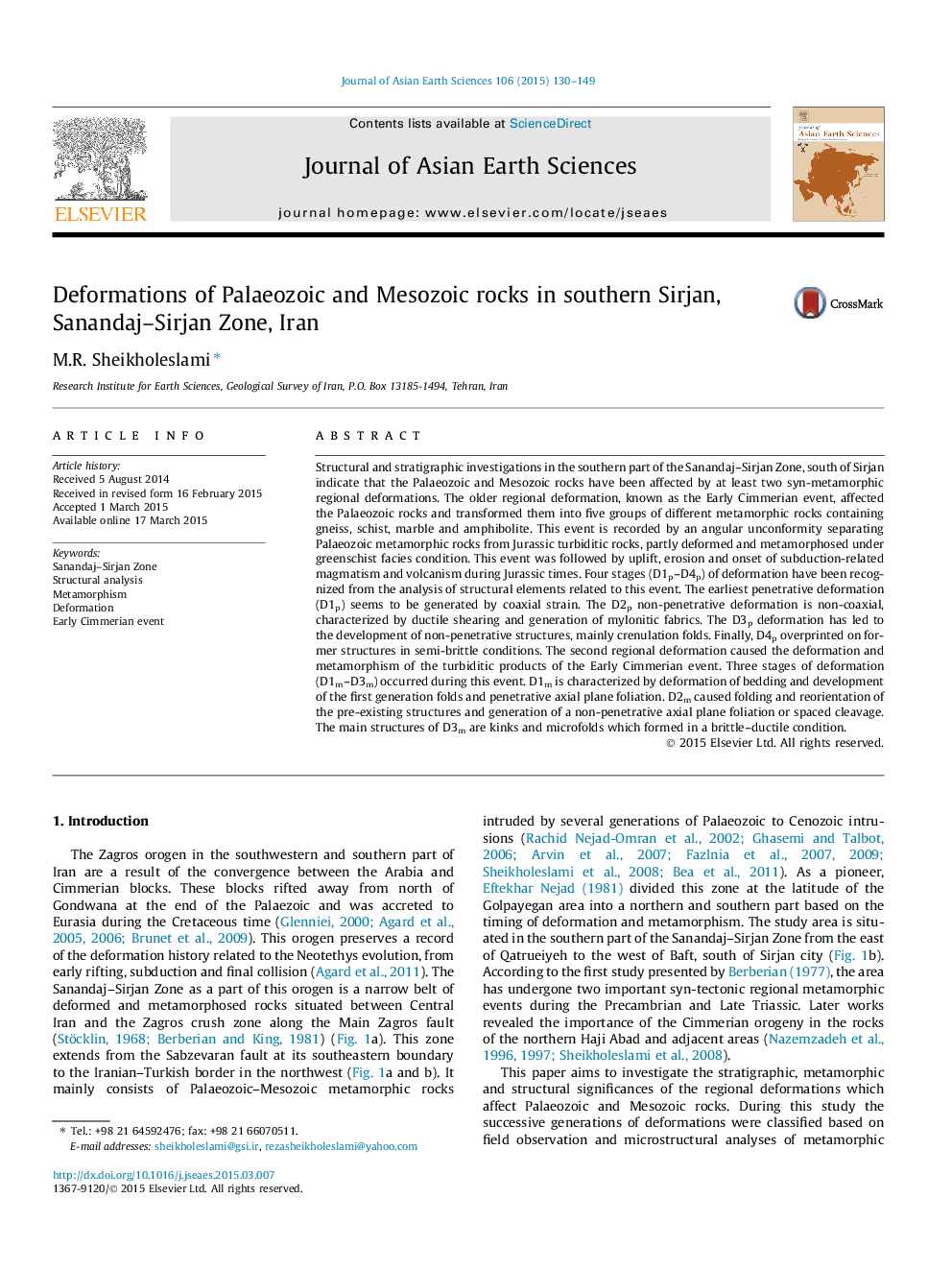| Article ID | Journal | Published Year | Pages | File Type |
|---|---|---|---|---|
| 6444274 | Journal of Asian Earth Sciences | 2015 | 20 Pages |
Abstract
Structural and stratigraphic investigations in the southern part of the Sanandaj-Sirjan Zone, south of Sirjan indicate that the Palaeozoic and Mesozoic rocks have been affected by at least two syn-metamorphic regional deformations. The older regional deformation, known as the Early Cimmerian event, affected the Palaeozoic rocks and transformed them into five groups of different metamorphic rocks containing gneiss, schist, marble and amphibolite. This event is recorded by an angular unconformity separating Palaeozoic metamorphic rocks from Jurassic turbiditic rocks, partly deformed and metamorphosed under greenschist facies condition. This event was followed by uplift, erosion and onset of subduction-related magmatism and volcanism during Jurassic times. Four stages (D1p-D4p) of deformation have been recognized from the analysis of structural elements related to this event. The earliest penetrative deformation (D1p) seems to be generated by coaxial strain. The D2p non-penetrative deformation is non-coaxial, characterized by ductile shearing and generation of mylonitic fabrics. The D3p deformation has led to the development of non-penetrative structures, mainly crenulation folds. Finally, D4p overprinted on former structures in semi-brittle conditions. The second regional deformation caused the deformation and metamorphism of the turbiditic products of the Early Cimmerian event. Three stages of deformation (D1m-D3m) occurred during this event. D1m is characterized by deformation of bedding and development of the first generation folds and penetrative axial plane foliation. D2m caused folding and reorientation of the pre-existing structures and generation of a non-penetrative axial plane foliation or spaced cleavage. The main structures of D3m are kinks and microfolds which formed in a brittle-ductile condition.
Related Topics
Physical Sciences and Engineering
Earth and Planetary Sciences
Geology
Authors
M.R. Sheikholeslami,
